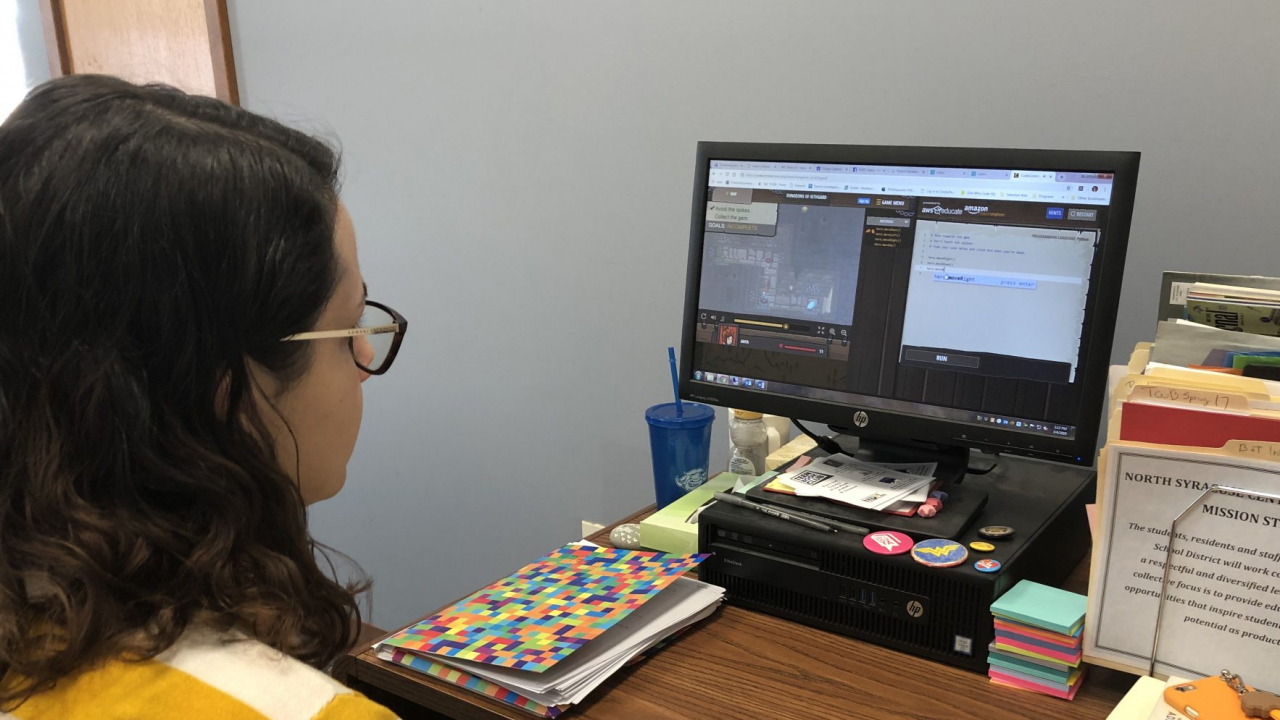
North Syracuse, N.Y. (NCC News) — With a few simple clicks on her keyboard, teen librarian Raena Pellichet demonstrated how easy it can be to create code on computer games. She wrote simple phrases such as “move left” or “move right” to progress her computer character through different levels in the games.
The Northern Onondaga Public Library in North Syracuse hosted an Hour of Code on March 4 where teenagers could come learn and practice how to code using different games from code.org. Pellichet said she hoped the hour would teach teenagers about the technology they use every day.
“Computers and technology are such a huge part of our everyday lives, and teens and kids in particular, have grown up in the environment surrounded by technology,” Pellichet said. “It allows them to connect with the technology they use every day and understand how it works a little bit more.”
The website includes themed games from Star Wars to Frozen, so teenagers can individualize their time based on experience level and what they’re interested in. Some games teach them how to write their own coding language. More basic games have the language already written in order to teach the correct order of codes. Other games are more creative and users can write code for what they want the character to be wearing.
“It gives them the idea that they can do these things and that they can be creative with it, and it’s not this strict box that they think of when they think of coding,” Pellichet said. “It allows them to learn problem solving and using logic and creativity to do different things.”
While both teenage boys and girls participated in the Hour of Code, Pellichet stressed the importance of teaching young girls how to code.
According to a study by the Pew Research Center, the science, technology, engineering and math fields (STEM) that has had the most job growth in the past few years is in computer occupations. However, fewer women choose this career path now compared to 1990. As of January 2018, Pew found women made up 25 percent of the computer occupations workforce as compared to 32 percent in 1990.
Because of this, Pellichet also hosts a Girls Who Code program.
“[The national program aims to] correct that imbalance, and help girls see that they can have a place in this field as well,” Pellichet said.




